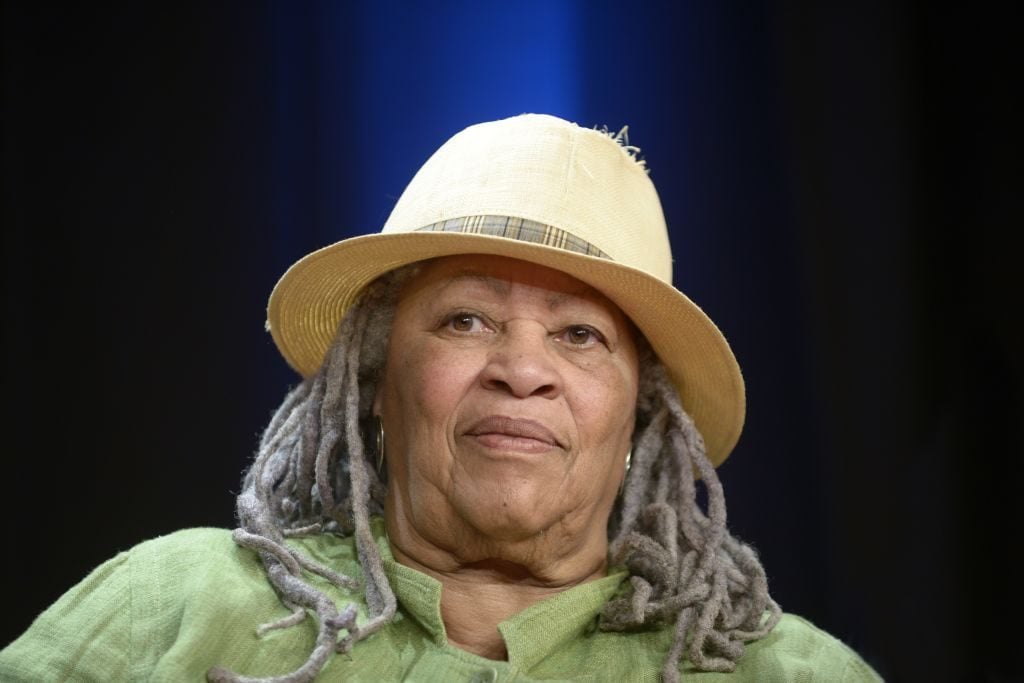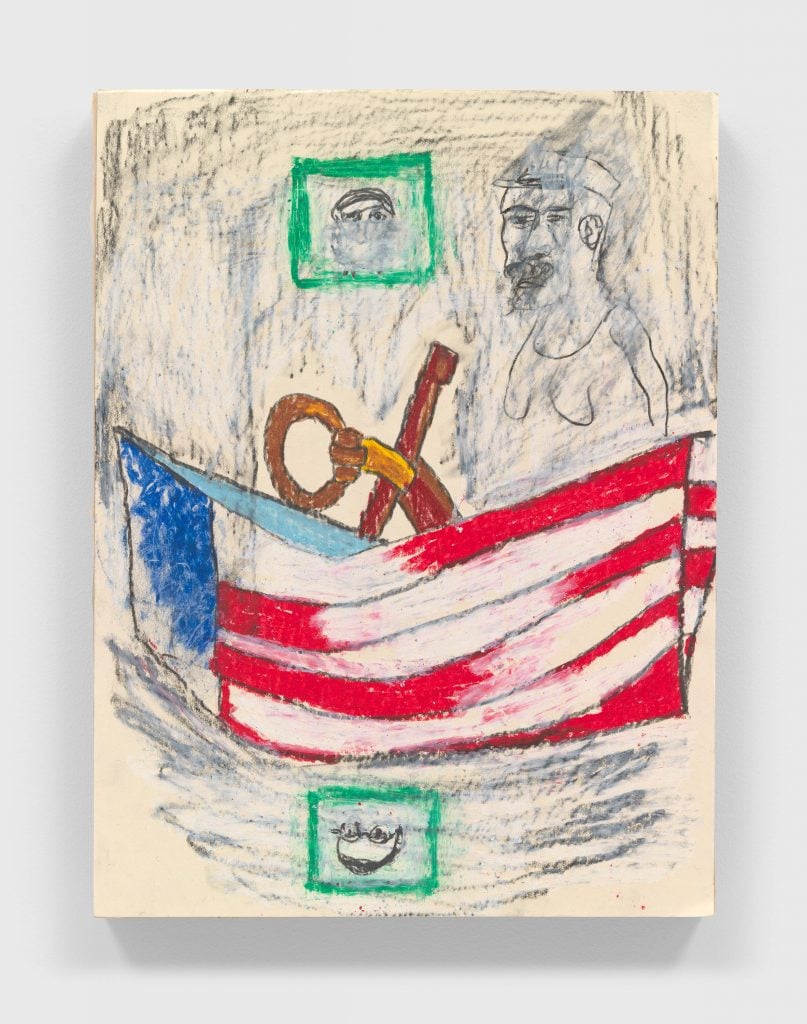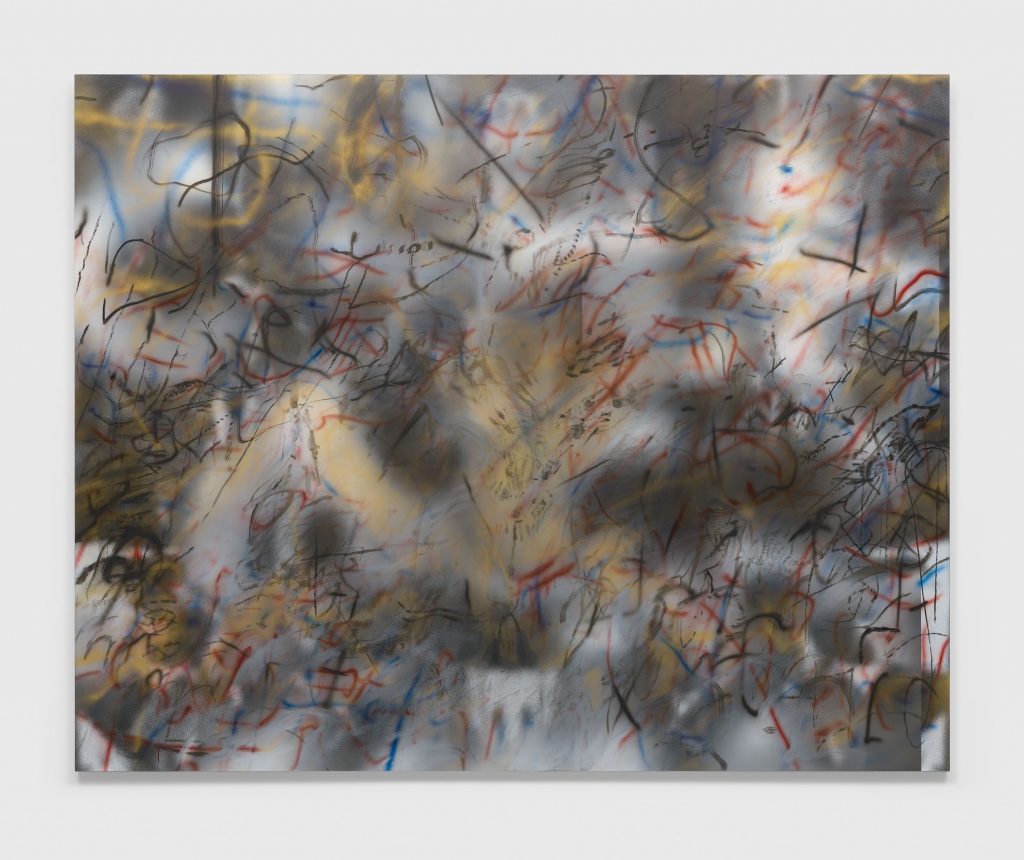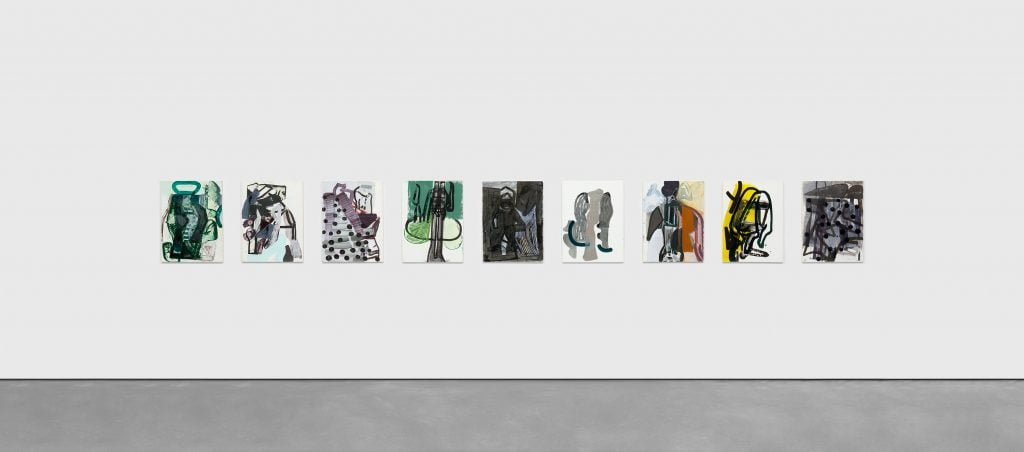Art & Exhibitions
Walter Price, Julie Mehretu, and Amy Sillman on the Works They Made in Honor of Toni Morrison for a New Exhibition on the Author
The show at David Zwirner in New York is curated by Hilton Als.

The show at David Zwirner in New York is curated by Hilton Als.

Sarah Cascone

The late, great Toni Morrison, a giant of U.S. literature, died in 2019, at the age of 88. (Her 91st birthday would have been this Friday.) Her absence looms large in the American culture—which is why the author was a natural subject for New Yorker critic Hilton Als’s latest curatorial outing at David Zwirner Gallery.
The group exhibition, “Toni Morrison’s Black Book,” is named after her 1974 book, a visual scrapbook presenting a variety of historical sources about African Americans. (It follows Als’s Zwirner tribute to another Black writer, James Baldwin, as well solo shows he organized about Alice Neel and Frank Moore.)
There was no shortage of artists eager to participate in the tribute to Morrison. The final list includes Walter Price, Julie Mehretu, Amy Sillman, Joseph Cornell, Jacob Lawrence, Kerry James Marshall, Helen Marcus, Chris Ofili, Irving Penn, and James Van Der Zee, among others.
We spoke to Price, Mehretu, and Sillman about their relationship to Morrison’s work, the importance of her legacy, and how the author inspired their contributions to the exhibition.

Walter Price, Thinly coded language (2019). © Walter Price. Courtesy Greene Naftali, New York.
I had not heard of the The Black Book before being approached by Hilton. From the beginning, I thought Hilton’s concept was profound. He made a show that we can see and feel, a show that brings together great artists to express the gratitude of Toni’s legacy. Within those cold white walls, Hilton has given us the warmth of emotions.
When I made the works for the show, I was specifically thinking about The Black Book. I thought about the magic of Henry Box Brown escaping [slavery] in a three-foot box. I thought about Jack Johnson’s strength and shamelessness to continue to box under unfair rules. I thought about Bessie Smith being a pioneer of the blues.
Toni Morrison is such an important author because she has expressed the complexities of Black life. She speaks to the Black audience, while diminishing the role of the white audience. I think that is very clever and important. Toni Morrison’s writing resonates with me for because I can feel it!

Julie Mehretu, A Mercy (after T. Morrison) (2019-20). © Julie Mehretu. Collection of Marguerite Steed Hoffman.
I have known of The Black Book for a long time. There are archives of blackness that are essential pillars of the culture. The Black Book, along with The Image of the Black in Western Art, FESTAC ’77 by Chimurenga, the 1619 Project by Nicole Hannah Smith, and many more, are crucial books and collections of visual archives.
I made the painting for this show specifically in response to re-reading A Mercy during the late spring weeks of quarantine, just after Hilton approached me about the project. It is a book that goes back to the origin of the making of this country and the various struggles and violences in that endeavor. We were in the midst of a wildly out-of-control pandemic with a criminally absent and vacant leader at the helm of the most powerful nation of the world. The precarity and far-right nativist political vertiginousness of our time was extremely palpable and terrifying.
The underpainting of this piece was created from a Rorschach of the inverse of an image from the white supremacist Unite the Right rally in Charlottesville in 2017. It’s a blurred image that creates spectral forms that play with the subliminal and the visceral haunting and fear being regurgitated by white supremacy, and generated by the years of the Trump administration. The painting is a direct response to both to those sources and the book A Mercy.

Amy Sillman, Paradise, (An Alphabet for Miss Morrison) (2021). © Amy Sillman.
In response to Hilton’s invitation, I had the idea to invent an alphabet for Toni Morrison, or a set of letters somewhere between an alphabet and hieroglyphics. I made a big stack of drawings based on the bodies in her novels, how they appeared, moved, leaned, etc. Then Hilton and I collaborated by arranging nine of the letters into a word to be “read” from left to right.
When I saw the whole show, I realized that Hilton had created a whole in-between zone, somewhere between a written essay and a visual exhibition, where everything was transitive: figures became letters, sculptures became stories, photographs were narratives, a handwritten letter was a picture, artworks were artifacts, and vice versa, all crisscrossing back to the work of Toni Morrison, whose powerful imagination invokes a world in which all conditions and relations could be different.
“Toni Morrison’s Black Book” is on view at David Zwirner, 525 West 19th Street, New York, January 20–February 26, 2022.